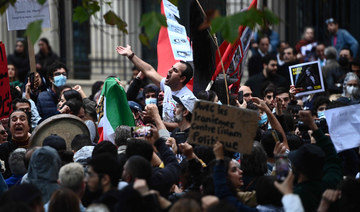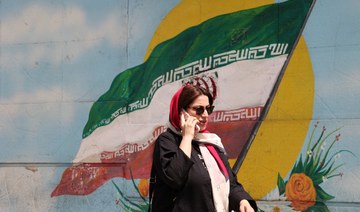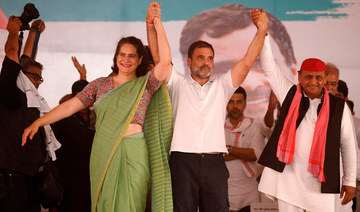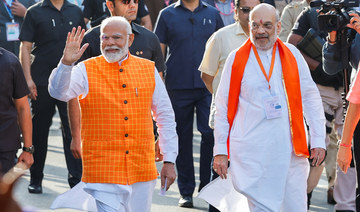NEW DELHI: India’s government said Wednesday it would ban foreigners from using surrogate mothers in the country, a move likely to hit the booming commercial surrogacy industry.
Ranks of childless foreign couples have flocked to the country in recent years looking for a cheap, legal and simple route to parenthood.
Health industry estimates put the size of India’s surrogacy business at nine billion rupees ($138 million) and growing at 20 percent a year.
But critics have said a lack of legislation encourages “rent-a-womb” exploitation of young, poor Indian women.
In an affidavit to the Supreme Court on Wednesday the government said it “does not support commercial surrogacy.”
“No foreigners can avail surrogacy services in India,” it told the court, which is hearing a petition regarding the industry, adding that surrogacy would be available “only for Indian couples.”
Thousands of infertile couples, many from overseas, hire the wombs of Indian women to carry their embryos through to birth.
India, with cheap technology, skilled doctors and a steady supply of local surrogates, is one of relatively few countries where women can be paid to carry another’s child. Surrogacy for profit is illegal in many other countries.
The process usually involves in-vitro fertilization and embryo transfer, leading to a rise in fertility centers offering such services.
A top fertility expert branded the government’s move discriminatory, while a leading women’s activist warned it could push the industry underground and out of reach of regulators.
“Banning commercial surrogacy will send some couples onto the black market and deprive other couples of the chance of children,” Ranjana Kumari, director of the Center for Social Research, said
India to ban surrogacy services to foreigners
India to ban surrogacy services to foreigners

A mob in Pakistan burns down a house and beats a Christian over alleged desecration of Qur’an
Police quickly responded and saved the lives of the two men
LAHORE: Hundreds of Muslims in eastern Pakistan went on a rampage over allegations that a Christian man had desecrated the pages of Islam’s holy book, ransacking and burning his house and beating him before police officers rescued the man and his father, officials said.
The incident occurred Saturday in the Mujahid Colony residential area in Sargodha, a city in Punjab province, said district police chief Ijaz Malhi. He said police quickly responded and saved the lives of the two men.
Malhi said the situation was under control and officers were investigating the allegations.
The incident brought back memories of one of the worst attacks on Christians in Pakistan in August 2023, when angry mobs burned churches and attacked dozens in Jaranwala, a district in Punjab province. Muslim residents claimed they saw a Christian and his friend tearing out pages from a Qur’an and throwing them on the ground. No one was killed. In 2009, six Christians were killed and some 60 homes burned down in the district of Gojra in Punjab following allegations of insults to Islam.
Malhi said police on Saturday dispersed the crowds and were also seeking help from religious scholars to defuse tensions. The Punjab government condemned the attack.
The man’s small shoemaking factory was also burned down, Malhi said.
Blasphemy accusations are common in Pakistan.
Under the country’s blasphemy laws, anyone found guilty of insulting Islam or Islamic religious figures can be sentenced to death. While no one has been executed for blasphemy, often just an accusation can cause riots and incite mobs to violence, lynching and killings.
Hundreds of Muslims in eastern Pakistan went on a rampage over allegations that a Christian man had desecrated the pages of Islam’s holy book, ransacking and burning his house and beating him before police officers rescued the man and his father, officials said. (AFP/File)
More than 10,000 people reach UK on small boats since January
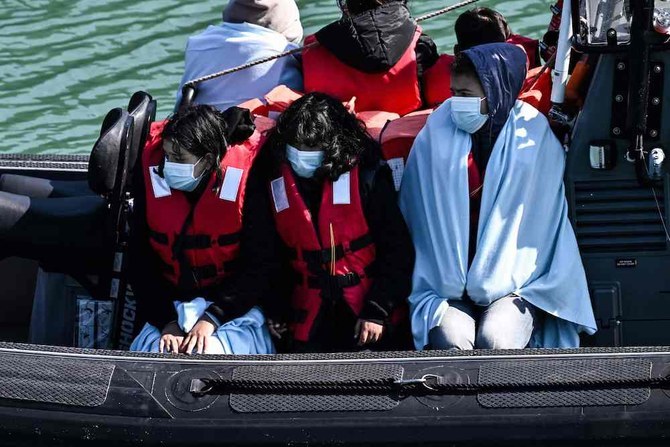
- The latest numbers on a government website showed 10,170 arrived between January and May 25
- The plan has been bogged down by legal obstacles for more than two years
LONDON: More than 10,000 asylum seekers have arrived in Britain in small boats so far this year, updated government data showed on Saturday, underlining a key challenge facing Prime Minister Rishi Sunak ahead of a July 4 national election.
The number of people landing on England’s southern beaches after making the dangerous Channel crossing fell by a third in 2023, but the latest numbers on a government website showed 10,170 arrived between January and May 25, up from 7,395 over the same period last year.
Sunak, who announced the election date on Wednesday, said later this week that asylum seekers who come to Britain illegally would not be deported to Rwanda before the vote — casting doubt on one of his Conservative Party’s flagship policies.
The plan has been bogged down by legal obstacles for more than two years, and the opposition Labour Party, which is about 20 points ahead in opinion polls and seen on track to end 14 years of Conservative rule, has promised to scrap the policy if it wins the election.
Labour’s shadow immigration minister Stephen Kinnock said Sunak’s government had not done enough to tackle the issue.
“Because all the government’s efforts are now focused on getting a few hundred people flown to Rwanda, they have lost sight of the thousands more who are crossing the Channel every month,” Kinnock said in a statement.
Labour has said if elected it would create a Border Security Command that would bring together staff from the police, the domestic intelligence agency and prosecutors to work with international agencies to stop people smuggling.
Supporters, opponents of Tehran clash in London
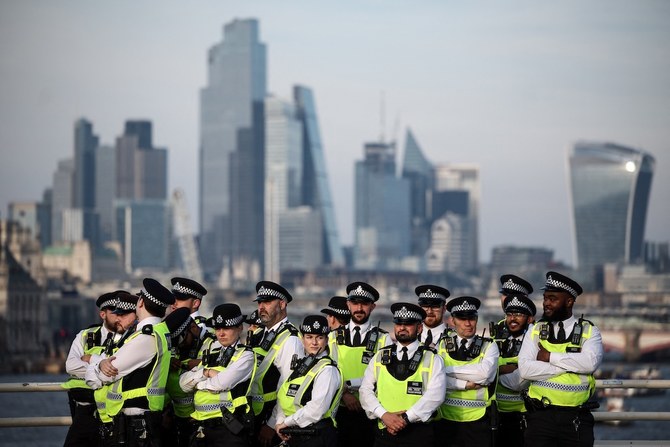
- Event to mark death of Iranian President Ebrahim Raisi descends into violence
- 4 injured, 1 arrested: Metropolitan Police
LONDON: Clashes in London between supporters and opponents of Iran’s government on Friday left four people with injuries, Sky News reported on Saturday.
One person was arrested on suspicion of violent disorder following the clashes.
Metropolitan Police officers were called to the scene at about 6 p.m. following reports of violence.
Pro-Tehran demonstrators had held an event to mark the death of President Ebrahim Raisi, who died in a helicopter crash last week.
Outside the venue, anti-Tehran protesters held a counter-demonstration, and clashes broke out between the two sides.
A Metropolitan Police spokesperson said four people were treated by paramedics for injuries. “Their injuries are not believed to be either life threatening or life changing,” the spokesperson added.
“Further inquiries will now follow to establish what further offences took place and to identify those involved.”
G7 says will try to use frozen Russian assets to help Ukraine
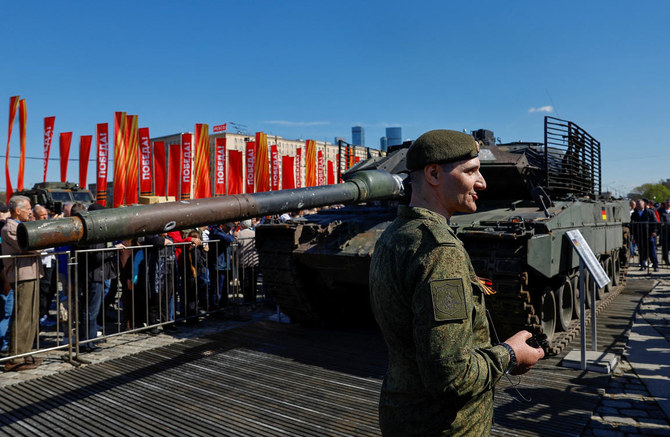
STRESA: The G7 will explore ways of using the future income from frozen Russian assets to help Ukraine, finance chiefs from the Group of Seven industrial democracies said on Saturday, according to a draft statement seen by Reuters.
The G7 froze some $300 billion of Russian assets shortly after Moscow invaded its neighbor in February 2022.
“We are making progress in our discussions on potential avenues to bring forward the extraordinary profits stemming from immobilized Russian sovereign assets to the benefit of Ukraine,” the draft statement said.
The statement will not undergo significant changes before a final version to be released later on Saturday, a G7 source said.
Millions vote in India’s grueling election with Modi’s party likely to win a third term
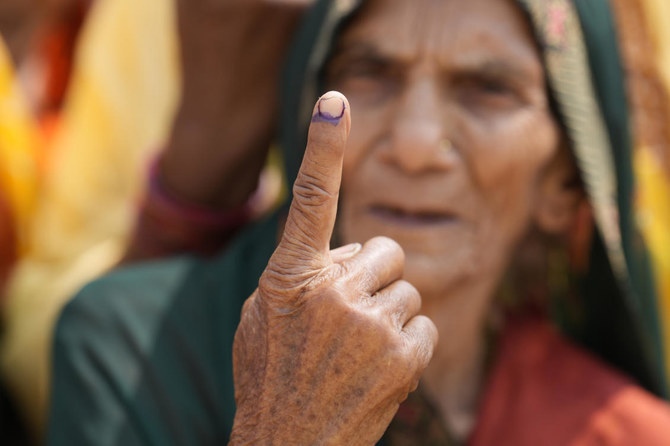
- Next-to-last phase of voting with temperatures forecast to surge to 47° Celsius in the capital New Delhi
- More than 111 million people in 58 constituencies across eight states and federal territories are eligible to vote
NEW DELHI: Millions of Indians are voting Saturday in the next-to-last round of a grueling national election with a combined opposition trying to rattle Prime Minister Narendra Modi’s campaign for a third-consecutive term for himself and his Hindu nationalist party.
Many people lined polling stations before the start of voting at 7 a.m. to avoid the blazing sun later in the day at the peak of Indian summer. The temperature soared to 43 Celsius (109.4 Fahrenheit) in the afternoon in the Indian capital.
Lakshmi Bansal, a housewife, said while the weather was hot, people usually went out to shop and even attend festivals is such heat.
“This (election) is also like a festival, so I don’t have a problem voting in the heat,” Bansal said.
Saturday’s voting in 58 constituencies, including seven in New Delhi, will complete polling for 89.5 percent of 543 seats in the lower house of Parliament.
The voting for the remaining 57 seats on June 1 will wrap up a six-week election. The votes will be counted on June 4.
President Droupadi Murmu and External Affairs Minister S. Jaishankar were among the early voters. Opposition Congress party leaders, Sonia Gandhi and her son Rahul Gandhi, also voted in New Delhi.
Mehbooba Mufti, a former top elected official of Indian-controlled Kashmir, held a protest with her supporters Saturday claiming that scores of her party workers were detained by the police to prevent them from voting. Mufti, the chief of the People’s Democratic Party who is contesting the parliamentary election in the Anantnag-Rajouri district, said she complained to election officials.
In West Bengal state, workers belonging to the All India Trinamool Congress party, blocked the car of Agnimitra Paul, one of Modi’s Bharatiya Janata Party candidates, as she proceeded to vote in Medinipur constituency. The two parties are rivals in the state and their workers often clash on the streets.
This election is considered one of the most consequential in India’s history and will test Modi’s political dominance. If Modi wins, he’ll be only the second Indian leader to retain power for a third term, after Jawaharlal Nehru, the country’s first prime minister.
A less-than-expected voter turnout in the previous five rounds of voting seems to have left both sides guessing about the outcome of the election.
Election authorities said they are taking steps to ensure voters’ comfort, such as setting up fans and tents and providing drinking water.
Most polls predict a win for Modi’s Hindu nationalist Bharatiya Janata Party, which is up against a broad opposition alliance led by the Indian National Congress and powerful regional parties.
Modi was involved in a highly acrimonious and mudslinging campaign with the opposition, led by Rahul Gandhi, the scion of the Nehru-Gandhi family that has produced three prime ministers.
“When the polls began it felt like a one-horse race, with Modi leading from the front. But now we are seeing some kind of shift,” political analyst Rasheed Kidwai said. “The opposition is doing better than expected and it appears that Modi’s party is rattled. That’s the reason you see Modi ramping up anti-Muslim rhetoric to polarize voters.”
Kidwai said the opposition has challenged Modi by centering its campaign narrative on social justice and rising unemployment, making the contest closer than expected.
Modi ran his campaign like a presidential race, a referendum on his 10 years of rule. He claimed to help the poorest with charity, free health care, providing toilets in their homes, and helping women get free or cheap cooking gas cylinders.
But he changed tack after a poor turnout of voters in the first round of the election and began stirring Hindu nationalism by accusing the Congress party of pandering to minority Muslims for votes.
Hindus account for 80 percent, and Muslims nearly 14 percent, of India’s over 1.4 billion people.
Manish Bhatia, a New Delhi voter, said that “politics on the basis of caste and religion is dangerous for the country,” adding that voting should be based on how candidates perform.
Nearly 970 million voters — more than 10 percent of the world’s population — were eligible to elect 543 members to the lower house of Parliament for five years.
Voters’ relative apathy has surprised some political analysts. In the five rounds of polling the voter turnout ranged between 62.2 percent to 69.16 percent — averaging 65.9 percent. By comparison, India’s 2019 national election registered the highest-ever voter turnout — 67.11 percent. Modi’s BJP won 303 seats in parliament in 2019.
Modi’s inauguration of a massive Hindu temple for the most revered Lord Rama, his massive roadshows, and big public rallies raised the BJP’s hopes of a massive a surge of voters in its favor.
The current prim minister came to power in 2014, dislodging the Congress party that governed the country for nearly 55 years after India won independence from British colonialists in 1947.
Before the election, the opposition INDIA alliance was seen bickering, but it has since held together, particularly after two chief ministers of two opposition-controlled states were sent to jail on corruption charges. Both deny the accusations.
One of them — New Delhi Chief Minister Arvind Kejriwal — has since been released on bail and returned to the campaign trail.
In March, Gandhi completed a 6,713-kilometer (4,171-mile) walk across the country, starting in the violence-hit northeastern state of Manipur, to raise awareness on issues of poverty, unemployment, and democracy with voters.
“The walk helped Gandhi boost his image as a serious politician among the voters, and that is helping the opposition,” Kidwai, the political anaylast, said.




